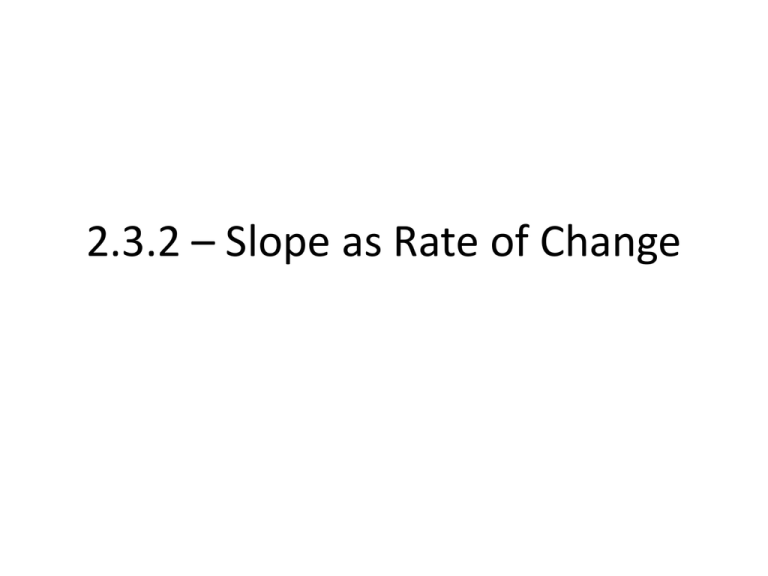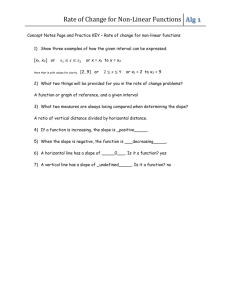2.3.2 * Slope as Rate of Change
advertisement

2.3.2 – Slope as Rate of Change • In real life context, we can extend the idea of a slope • Remember, slope is a ratio; change in one set of numbers over a change in another • Average Rate of Change = the amount a quantity changes, on average, to compared to a given change in another quantity – Dollars per hour – Miles per hour – Beats per minute Determining x and y values • When looking at some problems, we will have to determine the values for x and y – x (domain, input) = values we can change ourselves such as time we take observations, number of items we purchase, time of day or year – y (range, outputs) = values we cannot change ourselves; depends on another variable; price of items, temperature, heights of objects • Still calculate the rate of change the same as the slope; just use the slope formula from before y 2 y1 • m= x2 x1 • Example. Find the rate of change for the points (4, 12) and (10, 20) where x is measured as minutes and y is measured as repetitions. • Example. Find the rate of change for the points (0, 25) and (9, 12) where x is measured as days and y is measured as inches of water. • When applying rate of change with word problems, the process should go something like; • 1) Identify x and y values (what you can change, what you can’t change) • 2) Write down what would represent x1, y1 and the others • 3) Use the slope formula to calculate rate of change • 4) Reference the problem; does the math agree? – If the problem needs a positive change, then your answer should be positive or vice versa • Example. The number of cell phone subscribers in 1985 was approximately 300,000 people in the US. In 2010, the number of subscribers was approximately 300,000,000. Find the average yearly rate of change between 2010 and 1985. • Example. The average high temperature in Tallahassee during the month of July since 1899 is 92 degrees F. In December, the average high temperature is 65 degrees F. Find the average rate of change between the months of July and December. • Example. On a particular ski trail, over a 120 feet horizontal distance, the elevation (or vertical distance) goes from 4,690 feet to 4,240 feet. Find the average rate of change over the duration of the trail. (Remember, slope is the change in vertical over change in horizontal). • Assignment • Pg. 83 • 39-43 odd, 46, 47, 48, 51, 52, 58






